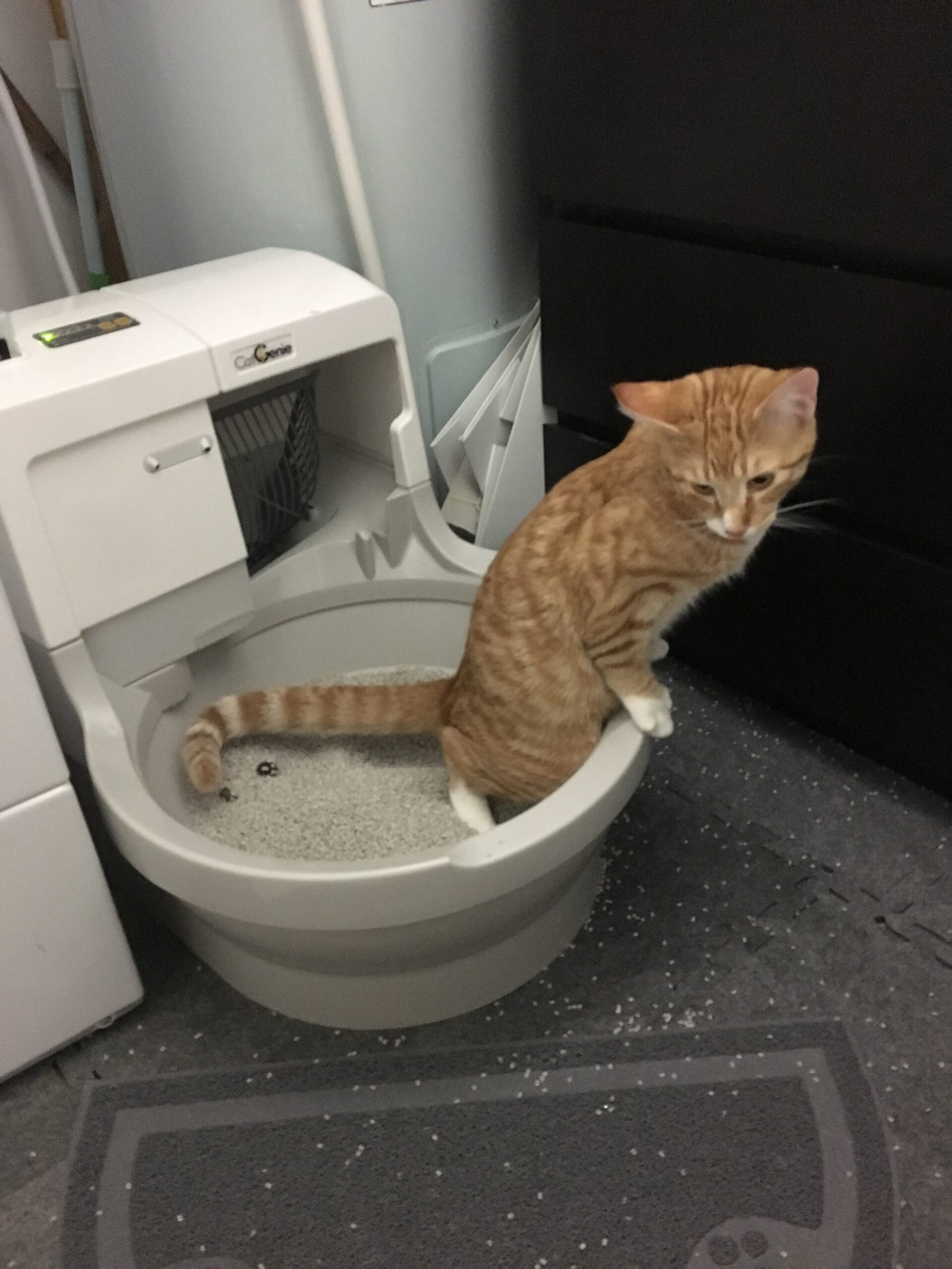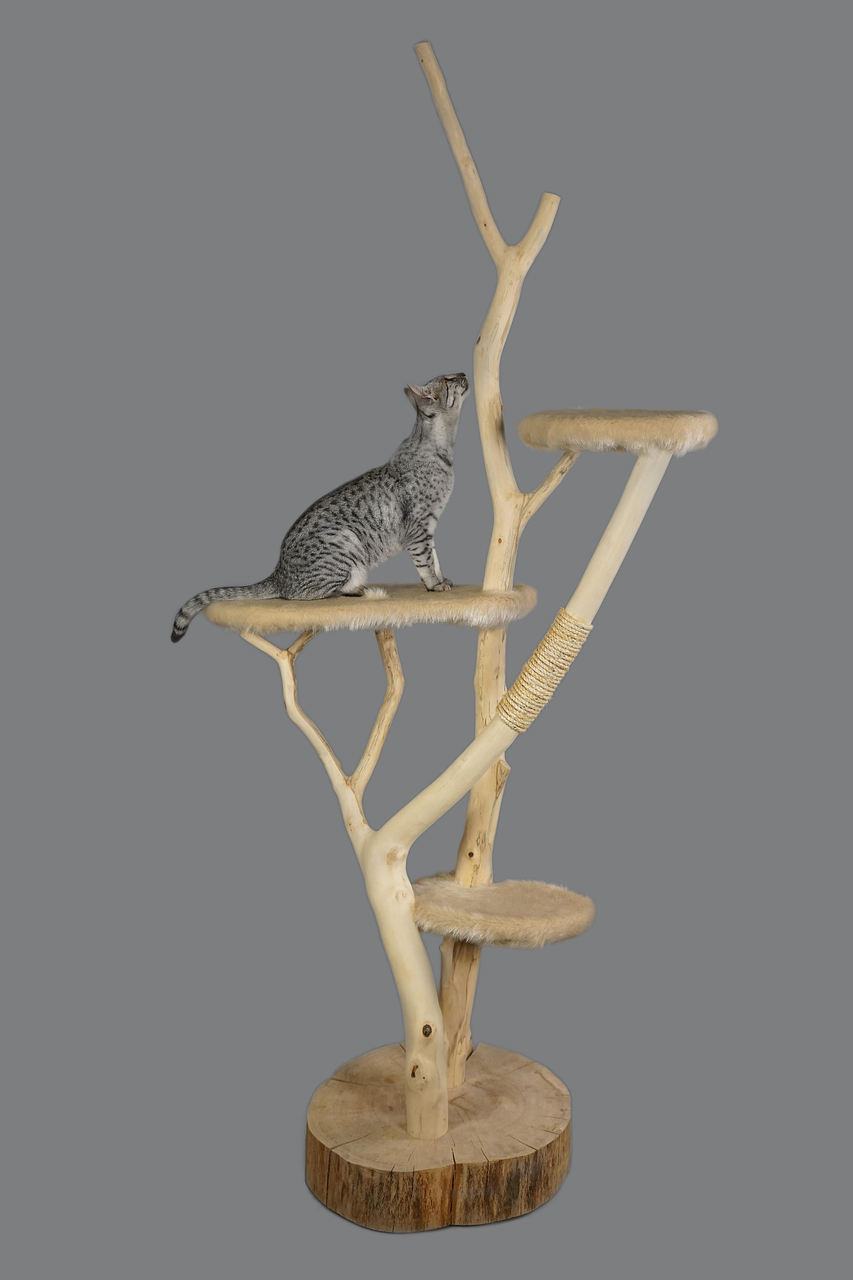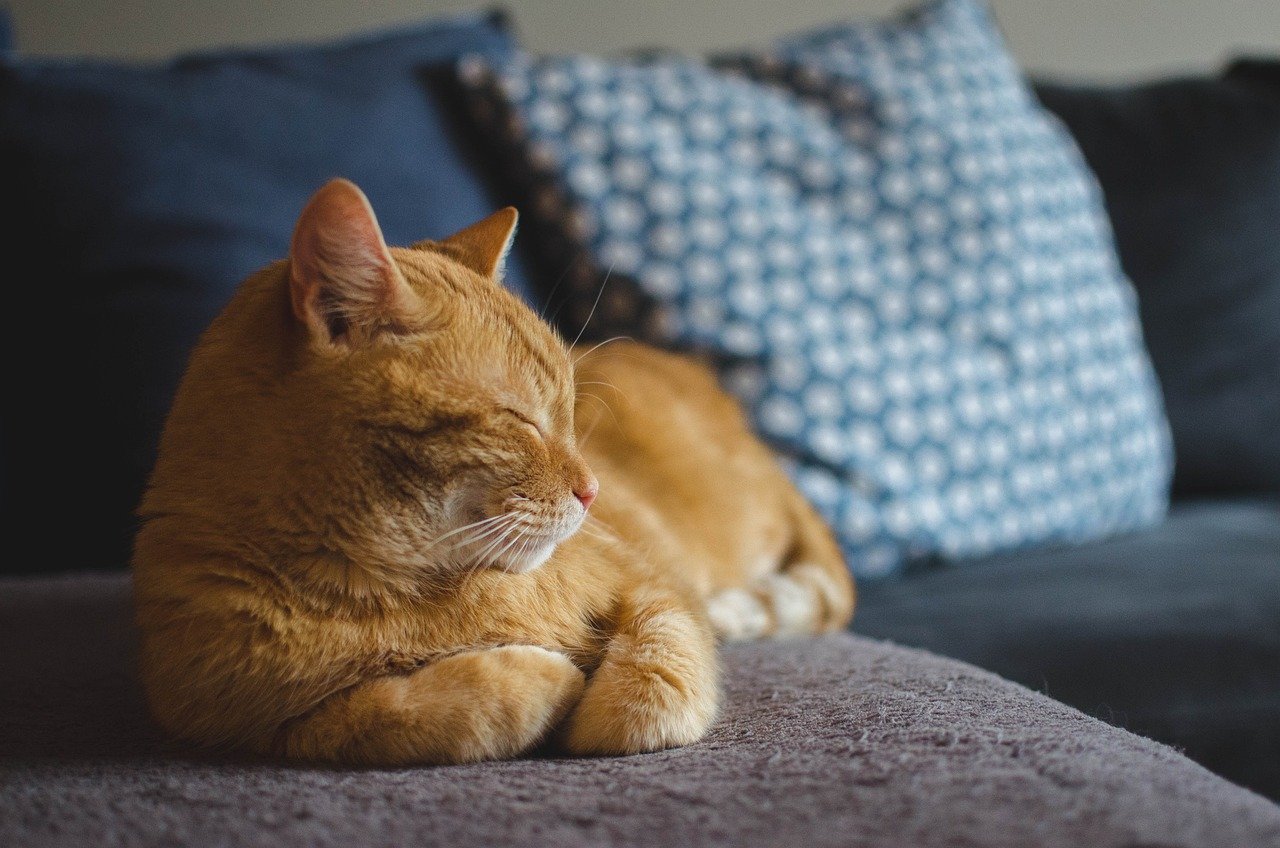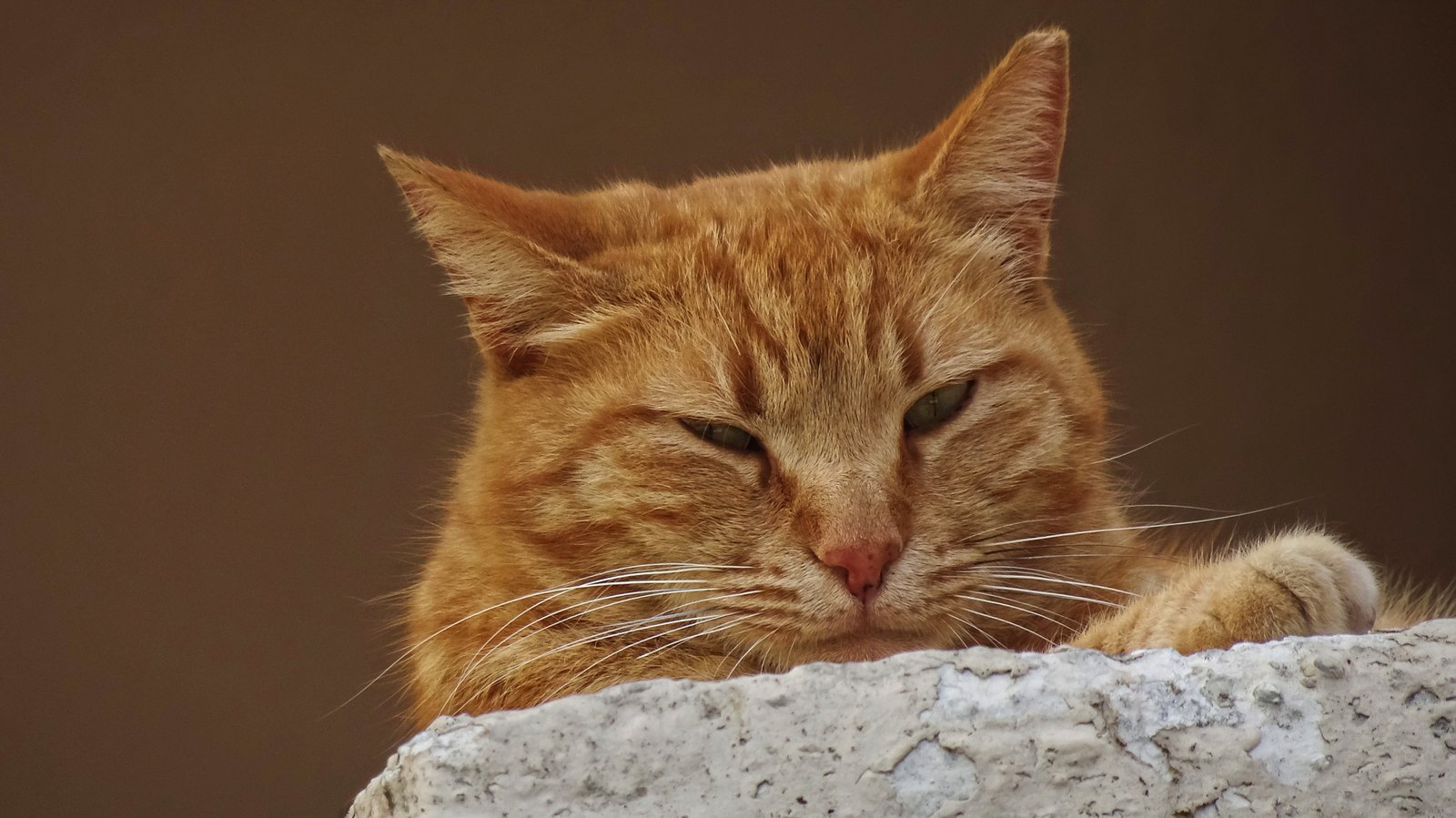Have you ever watched your cat take tiny, cautious steps, eyes wide and tail low, as though every shadow might be hiding a threat? It’s a heart-wrenching sight for anyone who loves their feline companion. But then, slowly—almost magically—something shifts. Your cat’s posture loosens, their eyes lose that haunted look, and you wonder: Is my cat finally letting go of their old fears? If you’ve been hoping to see your once-nervous cat find peace, you’re not alone. Discovering the signs that your cat is shedding their anxiety is not only inspiring, it’s also a celebration of patience, trust, and love. Let’s explore the subtle, surprising ways your cat might reveal their newfound confidence.
Relaxed Body Language at Home
One of the most telling signs that your cat is overcoming their fears is a change in their body language. Cats who are tense or scared tend to crouch low to the ground, keep their tails tucked, and avoid making themselves too visible. When your cat starts to stretch out on the couch, sprawl in a sunbeam, or even expose their belly, it’s a clear indication that they’re feeling safer. Relaxed muscles, half-closed eyes, and slow blinks are all signs your kitty is no longer perpetually on high alert. This shift might seem subtle at first—a slightly looser tail or a more confident stride—but it’s a huge step forward. Think of it as your cat saying, “I trust this space, and I trust you.” Over time, this relaxed posture will become more frequent and pronounced, and you’ll notice your cat spending more time lounging in open areas rather than hiding.
Initiating Contact and Seeking Attention
A fearful cat often avoids being touched or even seen. If your cat starts approaching you on their own, rubbing against your legs, or hopping onto your lap, it’s a beautiful sign of trust. Some cats may gently tap you with their paw or head-butt you for attention—a far cry from the days when they’d flee at the slightest movement. This behavior means your cat is not only comfortable in your presence but is also beginning to crave and enjoy your affection. It’s a sign that the bond between you is deepening. The first time your previously scared cat curls up next to you or nudges your hand for petting, it can feel like a tiny miracle. Remember, each time they initiate contact, they’re choosing to let kindness in, leaving fear behind.
Playing Freely and With Enthusiasm
Play is a window into a cat’s emotional state. A cat trapped by fear is unlikely to chase toys or pounce with abandon. But if your cat suddenly takes interest in strings, balls, or wand toys, it shows they feel secure enough to let their guard down. You might notice them darting across the room, leaping for a feather toy, or wrestling with a stuffed mouse. This playful energy is not just adorable—it’s a major indication of healing. It means your cat’s natural curiosity and joy are resurfacing. If your shy cat starts to “hunt” toys or even playfully ambush your feet, celebrate it! These are moments of true feline happiness and proof that fear no longer has the upper hand.
Exploring New Spaces
Cats who are afraid tend to stick to familiar hiding spots, rarely venturing out unless absolutely necessary. When your cat begins to roam the house, sniff around unfamiliar rooms, or perch on new furniture, it’s a sure sign they’re building confidence. Exploration is a cat’s way of saying, “I feel safe enough to see what’s out there.” You might notice them peeking into closets, jumping onto windowsills, or even checking out the bathtub just for fun. Every new space your cat explores is a step away from anxiety and toward a fuller, happier life. If you find your feline friend curiously investigating the world around them, you can be sure that fear is fading into the background.
Eating and Drinking With Ease
A scared cat often eats quickly, only when alone, or sometimes not at all. But when your cat starts to eat and drink openly—even when people are around—it’s a powerful sign of trust. You might notice them enjoying their meals in the kitchen while you’re nearby or drinking from their water bowl without constantly looking over their shoulder. This change is important because eating is one of the most vulnerable activities for cats. If your cat can do this without fear, it means they feel truly safe in their environment. Watch for signs like slow, relaxed chewing or even eating treats from your hand—these are all indications that your cat’s old worries are melting away.
Grooming in Open Spaces
Grooming is another deeply vulnerable behavior for cats. When your cat feels threatened, they might forgo self-care or only groom when hidden. If your cat is now calmly licking their fur in the middle of the living room or even rolling on the rug to clean their belly, it speaks volumes about their comfort level. This behavior shows they no longer feel the need to constantly watch their back. Grooming is also a self-soothing activity, so if your cat grooms openly, it means they feel secure enough to let their guard down. Take it as a compliment—it’s your cat’s way of saying, “I feel at home.”
Sleeping Soundly in Plain Sight
A fearful cat will often sleep with one eye open, tucked away in hidden corners or under beds. But when your cat starts dozing off in the middle of the couch or sprawled out on the carpet, it’s a profound sign of trust. Deep, relaxed sleep in open spaces means your cat is confident that no harm will come to them. You might catch them twitching in their sleep, dreaming peacefully, or even snoring softly. These moments are heartwarming and signal that your efforts to make them feel safe have paid off. If your cat can nap where everyone can see them, it’s a testament to their newfound sense of security.
Responding Calmly to New People
Many cats with a fearful past will hide or act out when strangers visit. However, if your cat starts to show curiosity instead of panic—maybe peeking around the corner or approaching new people calmly—it’s a huge breakthrough. They may even allow gentle petting from guests or sit nearby while you entertain friends and family. This change suggests that your cat is no longer haunted by old fears and is learning that new faces don’t always mean danger. Over time, you may notice your cat greeting visitors at the door or relaxing in the same room as your company. These are all wonderful signs that your cat’s world is expanding beyond fear.
Using the Litter Box Regularly

Stress and fear can wreak havoc on a cat’s litter box habits. A scared cat might avoid the box altogether or have accidents around the house. When your cat confidently uses the litter box, covers their waste, and doesn’t seem rushed or nervous, it’s a clear sign they feel safe. You’ll notice fewer accidents and a more consistent routine. This return to normalcy shows that your cat is no longer overwhelmed by anxiety. Regular litter box use is a practical but important indicator of emotional well-being, so never underestimate the significance of this simple habit.
Communicating With Meows and Purrs
Cats who feel insecure often stay quiet to avoid drawing attention. But as fear fades, you might hear your cat start to “talk” more, whether through soft meows, chirps, or even the occasional trill. Purring is another positive sign—especially if your cat purrs while being petted or just lounging nearby. These sounds are your cat’s way of expressing contentment and connection. Increased vocalization, especially in a playful or affectionate tone, shows your cat is comfortable enough to let their personality shine. Listen for those sweet, gentle noises; they’re a sign your cat is truly at ease.
Displaying Curiosity Instead of Caution
Shy or traumatized cats often react to new things with suspicion or fear. If your cat now greets changes—like a new toy, box, or piece of furniture—with interest rather than avoidance, it’s a big step forward. They may sniff, paw, or even hop onto new items, eager to investigate. This curiosity signals that your cat feels safe enough to explore rather than hide. You might even find them poking their nose into your grocery bags or investigating your shoes. Every curious gesture is a small victory and a sign of growing confidence.
Engaging in Social Behaviors
Cats who are letting go of fear often begin to participate more in household life. You may notice your cat following you from room to room, sitting with you during meals, or even joining in family activities. They might “help” with chores or sit nearby as you work. These social behaviors show that your cat wants to be part of your world instead of hiding from it. The desire to be included is a powerful sign that your cat feels secure and loved. Even small gestures, like sitting at your feet or watching you cook, are signs of a happier, more confident pet.
Allowing Petting and Handling
A fearful cat often recoils from touch or tolerates it only briefly. If your cat now leans into your hand, enjoys being stroked, or even offers their belly for a gentle rub, it’s a huge milestone. You might notice your cat seeking out petting sessions or positioning themselves in your lap for cuddles. This willingness to be touched means your cat is not only comfortable, but actually finds pleasure in your affection. Over time, you may find your cat purring contentedly while you brush them or even falling asleep while being held. These moments are priceless and show just how far your cat has come.
Using Their Scratching Post With Confidence

Scratching is a natural behavior for cats, but a stressed cat might avoid their post or scratch in inappropriate places. When your cat confidently uses their scratching post, stretching tall and really digging in, it’s a sign they feel at home. You might notice scratch marks on their post or see your cat using it multiple times a day. This behavior shows your cat is comfortable marking their territory and maintaining their claws. Confident scratching is both a sign of relaxation and a declaration that your cat feels this is truly their space.
Showing Affection to Other Pets
If you have more than one animal, a cat overcoming fear may begin to show affection to their furry siblings. This could be grooming another cat, playing gently, or even cuddling up together for naps. In multi-pet households, fearful cats often keep their distance or act defensively. When your cat starts initiating contact, sharing spaces, or participating in group play, it’s a testament to their improving emotional state. These friendly interactions mean your cat feels secure enough to form bonds and trust others besides you.
Refusing to Hide During Storms or Loud Noises

Many traumatized cats bolt for cover during thunderstorms, fireworks, or even the vacuum cleaner. If your cat now stays put, watches calmly, or only briefly acknowledges these sounds, it’s a remarkable sign of progress. You might notice them glancing at the window during a storm but choosing to stay on your lap or their favorite chair. This resilience shows that your cat feels strong enough to weather life’s loud moments without retreating into fear. It’s a sign of newfound bravery and trust in their environment.
Greeting You at the Door

A cat who meets you when you come home is expressing both excitement and trust. Cats who are still fearful tend to hide or watch from afar. But if your cat now rushes to the door, meows, or rubs against your legs as soon as you step inside, it’s a joyful sign that they feel safe. This behavior shows your cat is not only comfortable in their home but also sees you as a source of happiness and security. Each warm welcome is a small celebration of the bond you’ve built together.
Accepting Routine Changes Without Panic

Cats thrive on routine, but fearful cats can be especially sensitive to any changes, no matter how small. If your cat now handles slight disruptions—such as new feeding times, different furniture arrangements, or guests staying over—without hiding or acting out, it’s a sign they’ve built emotional resilience. You might notice them watching new activities with interest or simply going about their day as usual. Their ability to adapt calmly shows they trust that their world is safe, even when things aren’t exactly the same.
Displaying Play Bows and “Zoomies”
One of the most joyful sights is a cat who suddenly bursts into a playful run—darting around the house, leaping onto furniture, or performing dramatic “play bows” with their rear in the air. These bursts of energy, often called the “zoomies,” are a clear sign your cat feels happy and secure. Only a cat free from fear will indulge in such silly, uninhibited play. If your cat races around the house or throws themselves into play sessions with abandon, it means they’re living in the moment, not in the shadow of past anxieties.
Showing Interest in the Outdoors (From Safety)
Finally, a cat who feels secure may start to show interest in the world beyond your windows. You might catch them watching birds from the sill, chirping at squirrels, or resting by a screen door to soak up the sights and smells. This curiosity about the outside world indicates your cat feels confident enough to be engaged with their environment. They may even enjoy supervised outings in a secure yard or on a harness. This new interest is a wonderful sign that your cat is embracing life with a spirit of wonder, not worry.
Hi, I’m Bola, a passionate writer and creative strategist with a knack for crafting compelling content that educates, inspires, and connects. Over the years, I’ve honed my skills across various writing fields, including content creation, copywriting, online course development, and video scriptwriting.
When I’m not at my desk, you’ll find me exploring new ideas, reading books, or brainstorming creative ways to solve challenges. I believe that words have the power to transform, and I’m here to help you leverage that power for success.
Thanks for stopping by, Keep coming to this website to checkout new articles form me. You’d always love it!





